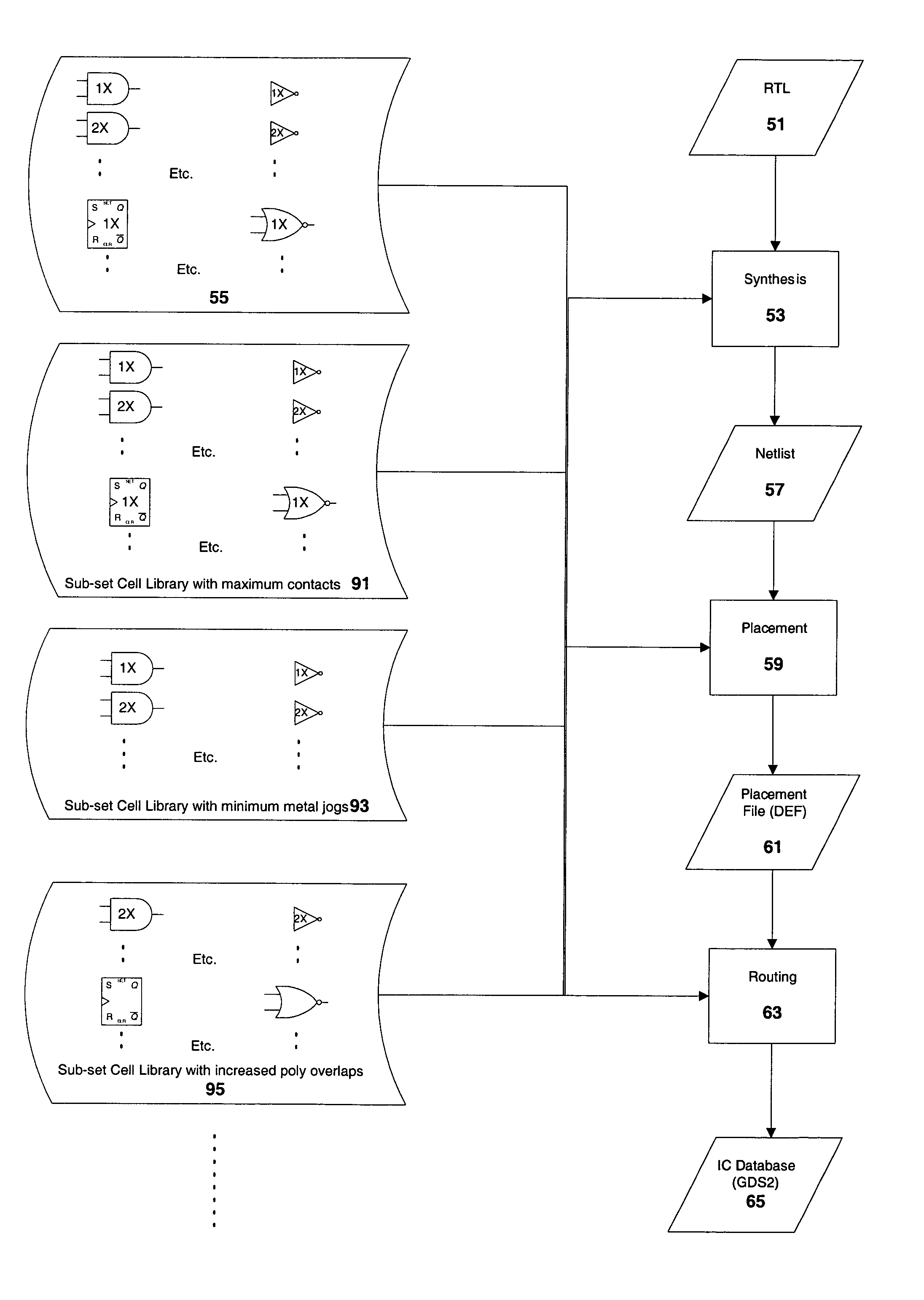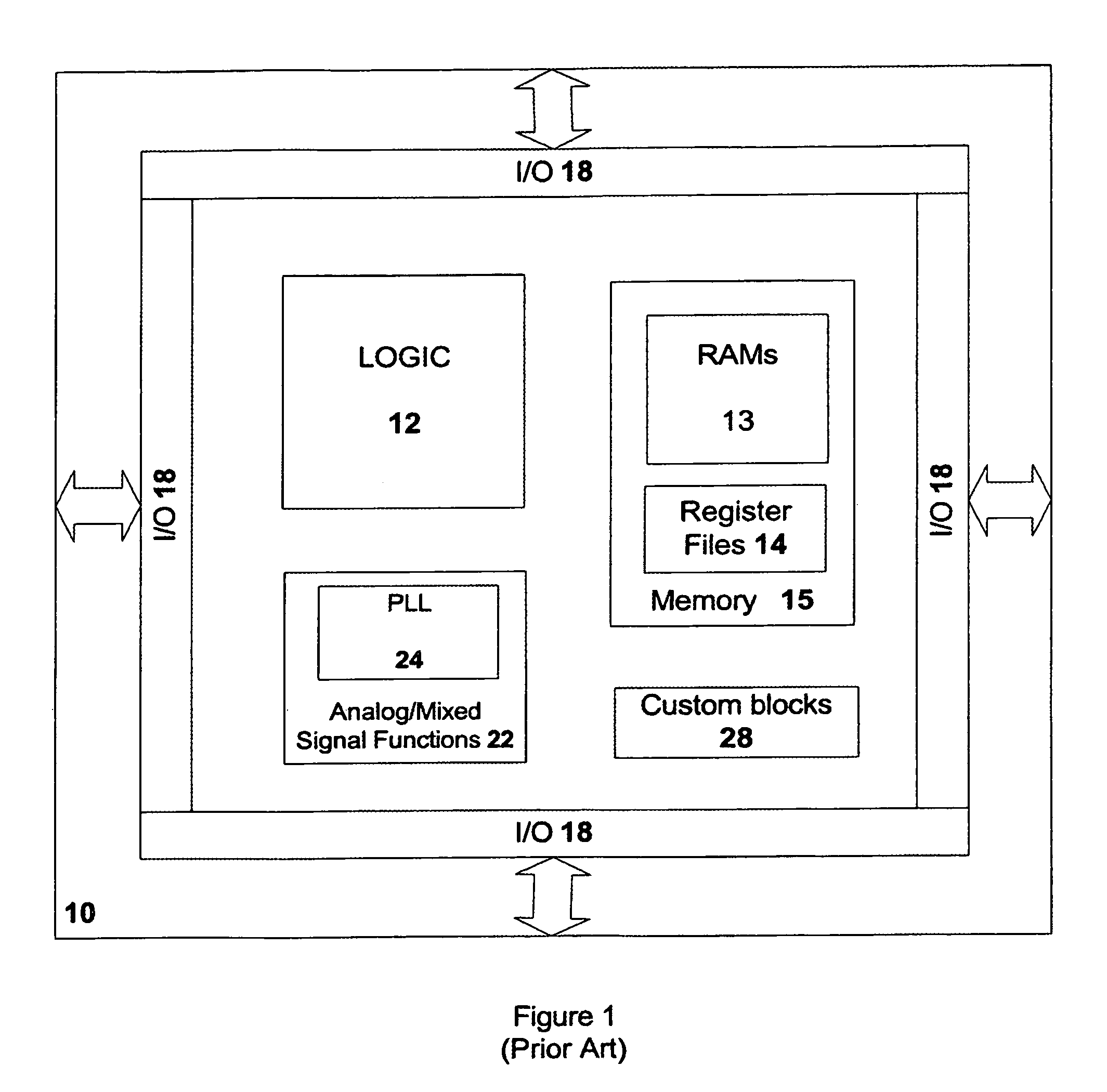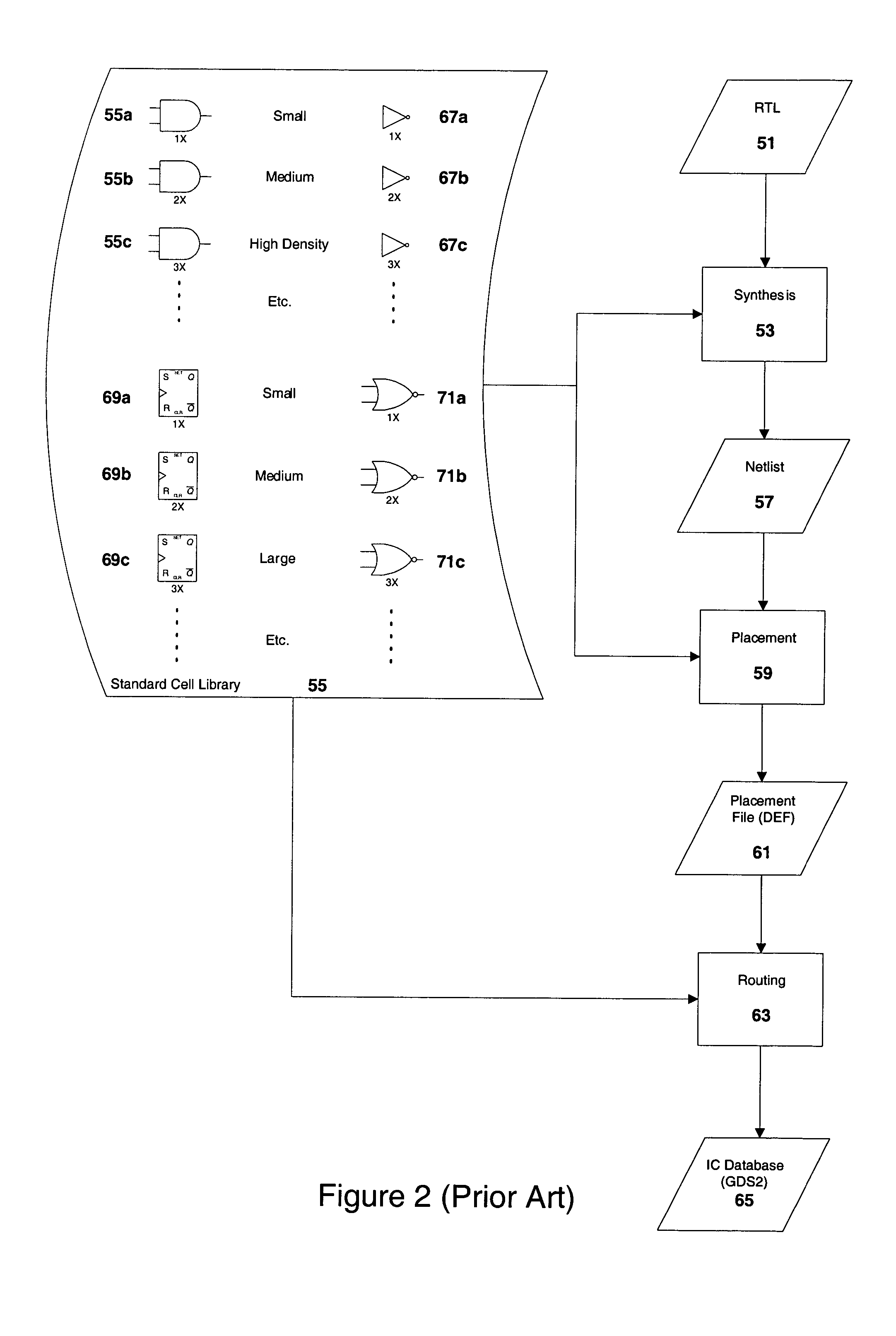Yield maximization in the manufacture of integrated circuits
a technology of integrated circuits and yield maximization, applied in the field of integrated circuits, can solve the problems of unavoidable cost, large output driver transistors with a larger delay, and complex implementation of logic functions, so as to improve the yield of fully functional ics, improve the yield of logic blocks, and improve the yield of ics.
- Summary
- Abstract
- Description
- Claims
- Application Information
AI Technical Summary
Benefits of technology
Problems solved by technology
Method used
Image
Examples
Embodiment Construction
[0021]In the following description, numerous specific details are set forth in order to provide a thorough understanding of the present invention. It will be apparent, however, to one of skill in the art that the present invention may be practiced without some or all of these specific details. In other instances, well known process steps have not been described in detail in order to unnecessarily obscure the present invention.
[0022]The design and manufacture of complex ICs has an established methodology and an established technology. The IC designer implements each of the functional blocks by selecting from various options to achieve the target IC specifications with minimum semiconductor area. In case of the hard macros such as memory, analog and I / Os, as well as special purpose logic blocks, each instance of these blocks is selected manually by the IC designer to achieve the desired results. For logic blocks implemented with a plurality of different standard cells, similar optimiz...
PUM
 Login to View More
Login to View More Abstract
Description
Claims
Application Information
 Login to View More
Login to View More - R&D
- Intellectual Property
- Life Sciences
- Materials
- Tech Scout
- Unparalleled Data Quality
- Higher Quality Content
- 60% Fewer Hallucinations
Browse by: Latest US Patents, China's latest patents, Technical Efficacy Thesaurus, Application Domain, Technology Topic, Popular Technical Reports.
© 2025 PatSnap. All rights reserved.Legal|Privacy policy|Modern Slavery Act Transparency Statement|Sitemap|About US| Contact US: help@patsnap.com



